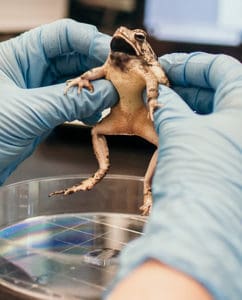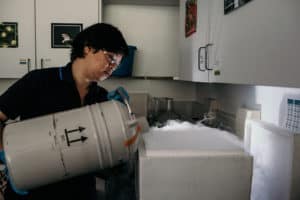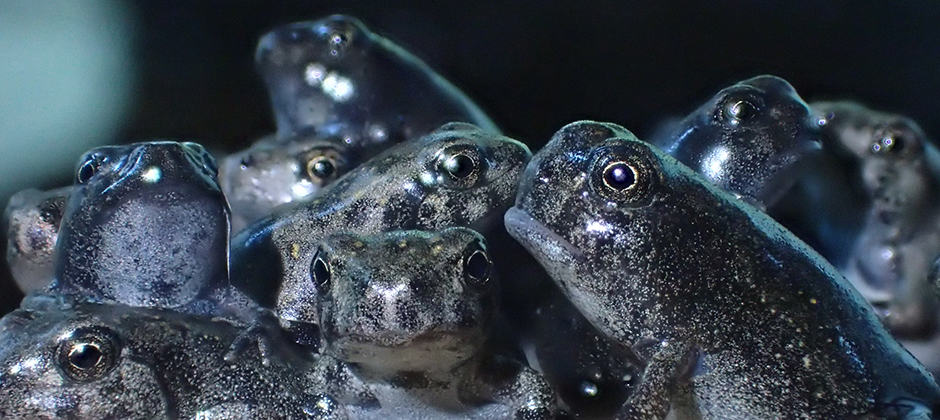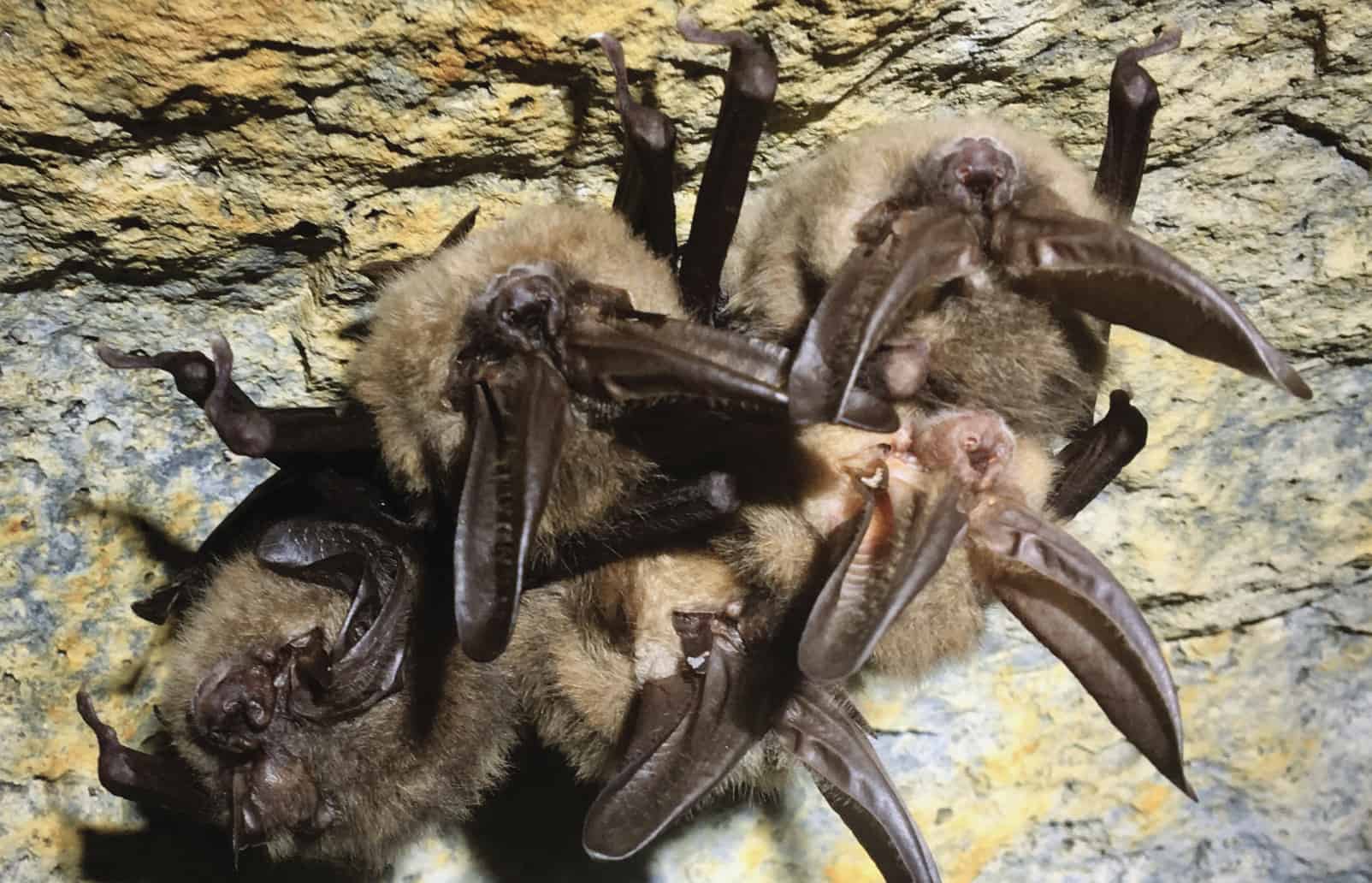Share this article
Captive breeding technique may pose problems for amphibians
Cryo-freezing amphibian sperm can result in smaller tadpoles and toads — a discovery that may have implications for future captive populations intended for eventual reintroduction.
Comparing toads raised through cryo-freezing with a control group, researchers from the Memphis Zoo found that tadpoles from cryogenically frozen sperm were smaller and resulted in smaller juveniles.
“If we release these individuals into the wild, chances are they are going to have a higher mortality rate,” said Sinlan Poo, a research scientist with the zoo’s Department of Conservation and Research and lead author of a study published recently in Global Ecology and Conservation. The smaller toads may have a harder time finding prey and avoiding predators, she said.

Researcher Kristin Hinkson extracts sperm from a wild Fowler’s toad. ©Abbey Bratcher
Like many other zoos, the Memphis Zoo partners with conservation organizations on captive breeding and reintroduction programs for species of conservation concern, such as the dusky gopher frog (Lithobates sevosus). While it doesn’t currently use cryogenically frozen sperm for any reintroduction programs, it has a bank where it stores sperm from species like snow leopards (Panthera uncia), giant pandas (Ailuropoda melanoleuca), Louisiana pine snake (Pituophis ruthveni), Panamanian golden frogs (Atelopus zeteki), dusky gopher frogs and up to 20 other amphibian species as a long-term backup.

Researcher Sinlan Poo prepares to cryogenically freeze toad sperm. ©Abbey Bratcher
Poo and her co-author Kristin Hinkson set out to see if individuals hatched using cryo-sperm managed to survive and breed successfully at normal rates. They caught Fowler’s toads (Anaxyrus fowleri), a common species in the wild around the zoo, cryo-froze sperm from the toads for at least 48 hours and used it to fertilize eggs from wild-caught females in the laboratory.
Ten days after hatching, the tadpoles bred from cryo-sperm were about 10%-15% shorter than those in a control group hatched from eggs fertilized with fresh sperm. About 30 days later, once they metamorphosed and emerged from the water, the cryo-sperm toads were smaller, too.
Because the process includes a number of variables, it’s unclear why the amphibians are smaller, Poo said, but it raises concerns about its use for species of conservation concern, like dusky gopher frogs.
“It’s not a method that’s used in any amphibian reintroduction in our zoo and very rarely in others, but it might be needed one day in the future,” Poo said. “Before we get there, we should work out the kinks.”
Header Image: Fowler’s toads metamorphosing from tadpoles into toads. ©Sinlan Poo








